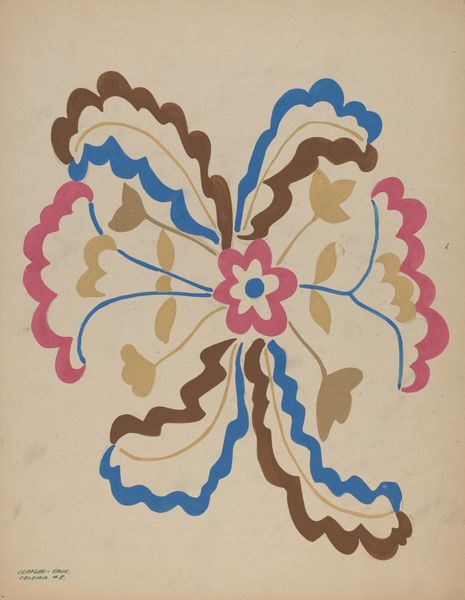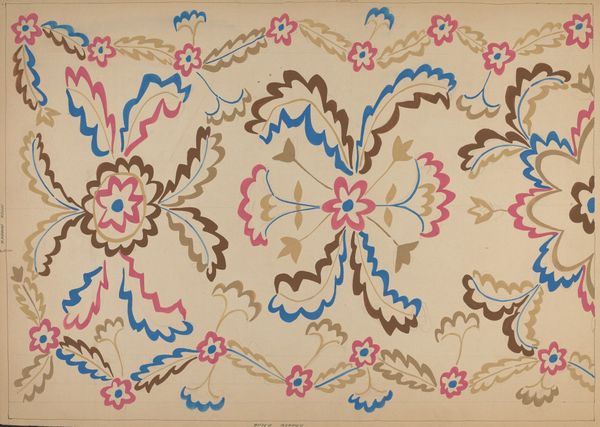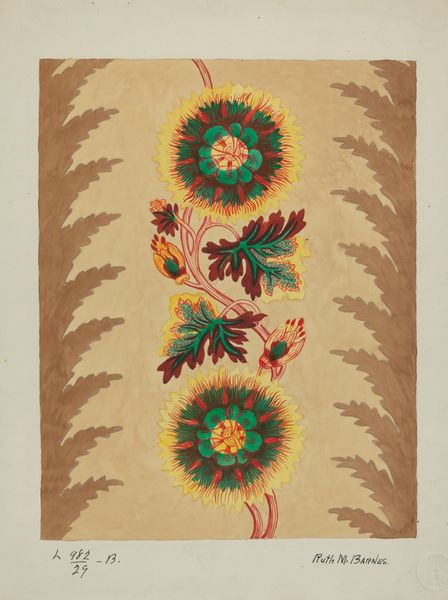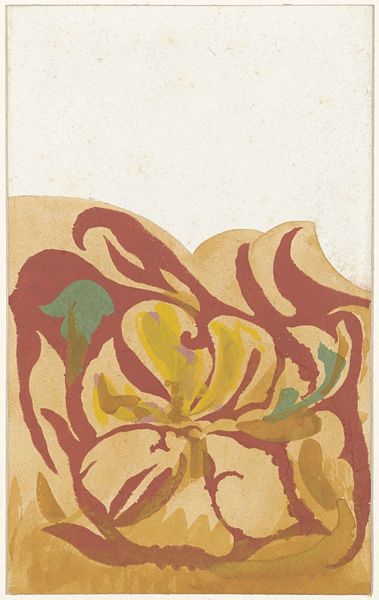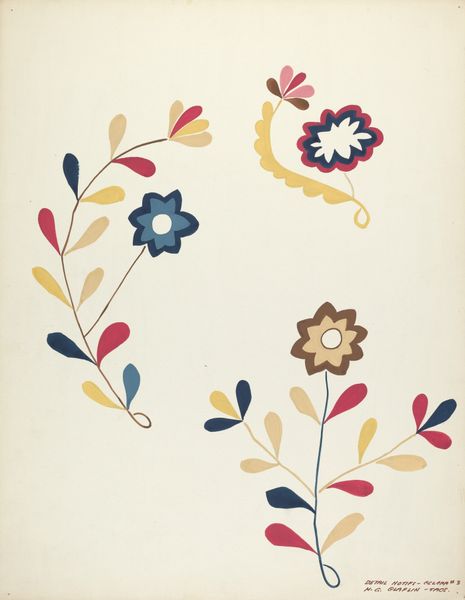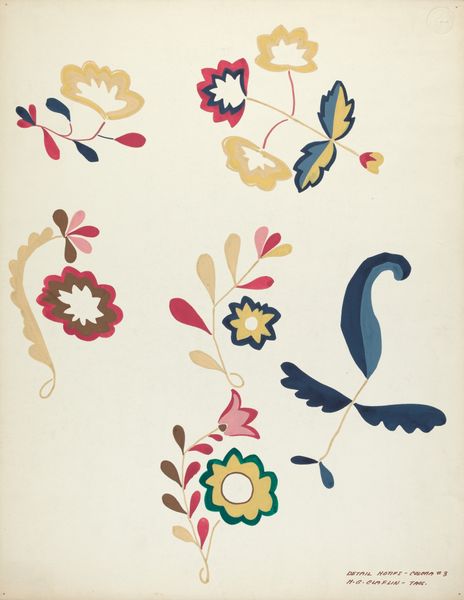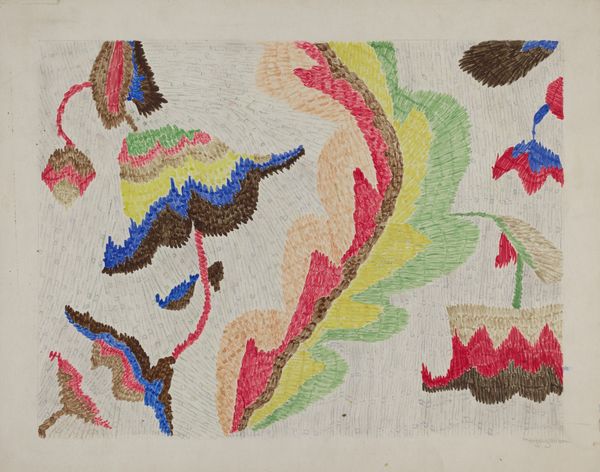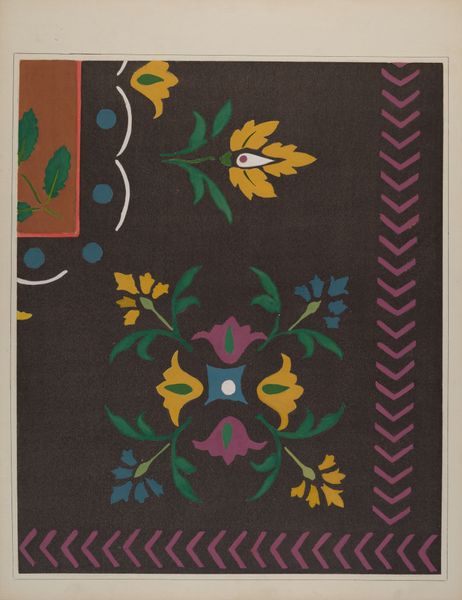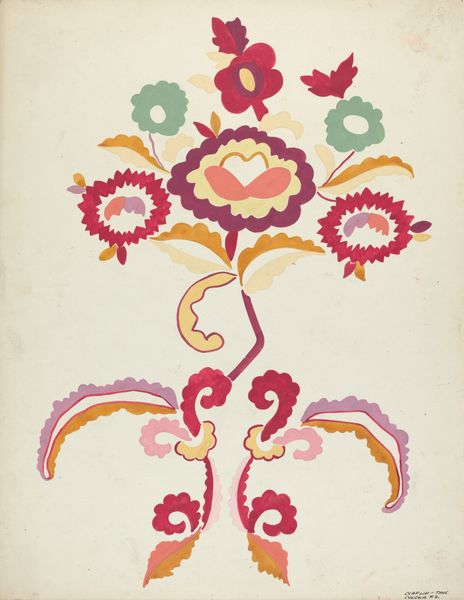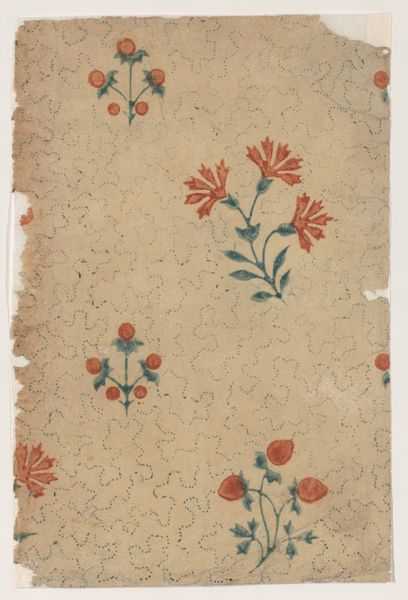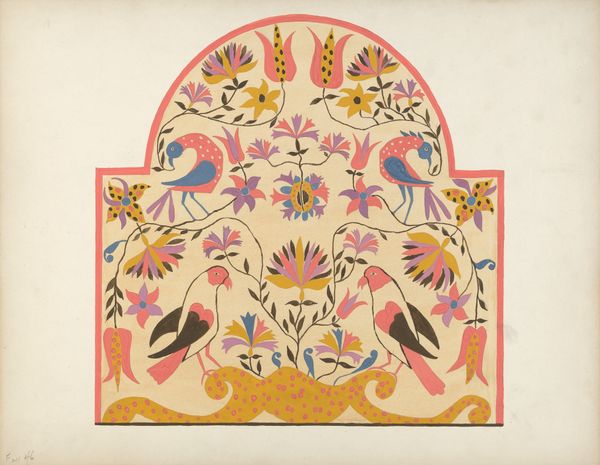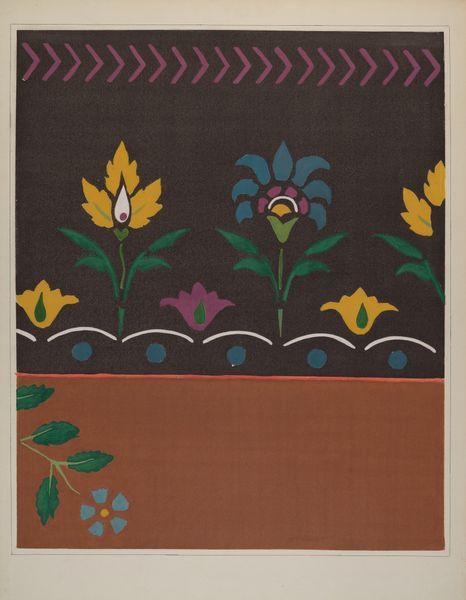
drawing
#
drawing
#
pattern
#
geometric
#
decorative-art
Dimensions: overall: 45.8 x 35.7 cm (18 1/16 x 14 1/16 in.) Original IAD Object: 48" wide; 36" long
Copyright: National Gallery of Art: CC0 1.0
Editor: This is “Colcha” by Majel G. Claflin, made sometime between 1935 and 1942. It appears to be a drawing, perhaps a design for textile art. It's a charming, somewhat folksy design, and I'm intrigued by the mix of geometric and floral-like shapes. What's your take on it? Curator: I’m immediately drawn to consider how the production of "Colcha" – likely a pattern intended for needlework – situates it within the broader landscape of the Depression era. Look closely at the use of readily available materials and simple techniques, which point to resourcefulness born from economic hardship. It really encourages a questioning of the hierarchical divide often placed between fine art and so-called “craft.” Editor: I see what you mean. The design does look fairly simple, and it does suggest accessibility in its execution. Would this design be made to be widely available or made as single, bespoke pieces? Curator: Good question! Think about who would be consuming these objects. Was it intended for mass production, contributing to a growing consumer culture even in that difficult time, or perhaps it was geared towards individual makers seeking patterns for personal use and small scale economy, embodying self-reliance and making-do attitudes of that era? Also, what type of labor might produce this – wage earners? Makers producing goods out of the private sphere for sustenance? These factors inform the social context of its production and consumption, really. Editor: I didn't consider the implications of mass production versus individual use in this artwork. This emphasis on production really changes my understanding and opens a window into understanding the conditions of labour at the time. Curator: Precisely. It forces us to acknowledge the labor, the materials, and the consumption surrounding even the simplest of images and art forms. Editor: Thanks for sharing your perspectives, it really opened up a new layer for interpreting this art.
Comments
No comments
Be the first to comment and join the conversation on the ultimate creative platform.

